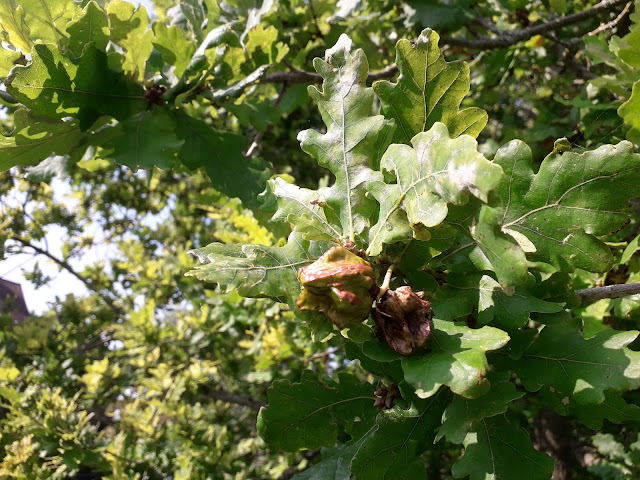Knopper galls are knobbly growths on acorns. They almost look like some kind of pine cone.
Now is the season for them. Having ripened on the tree they fall off and you may first notice them on the ground beneath a mature oak tree. Here the grubs pupate and spend the winter inside the fallen galls waiting for spring.

The tiny gall wasps that emerge from these fallen galls are, strangely, all female and their job is to seek out a Turkey Oak and lay their eggs on the catkins, where a less obvious gall develops.
The Turkey Oak (Quercus cerris) is taller and straighter than our native oaks (Quercus robur and Quercus petraea) and the leaves, as shown in the photo below, are narrower and less symmetrical than the natives.
The knopper gall wasp was first recorded in Britain in the 1950s. It spread so that in 1979 there was a population explosion followed by a panic that our oak trees would never grow viable acorns again.
This did not happen and there is no need to worry or try to get rid of the galls.
There are several galls that grow on oak trees and many of them have this two-generation life cycle. You may be familiar with the marble galls that frequently occur on younger trees and the larger, softer oak apples on mature trees.
At this time of year if you notice small yellow blotches on oak leaves . . . .
. . . . turn them over and you will find spangle galls. There are three sorts, resulting from the egg-laying activity of three different tiny gall wasps. The common spangle galls have a little pimple in the middle; silk button spangle galls have a dimple in the middle like a minute ring doughnut, and smooth spangle galls are - well, smooth - with neither a pimple nor a dimple.
Miniature wonders.




No comments:
Post a Comment
I just love getting comments so go ahead.